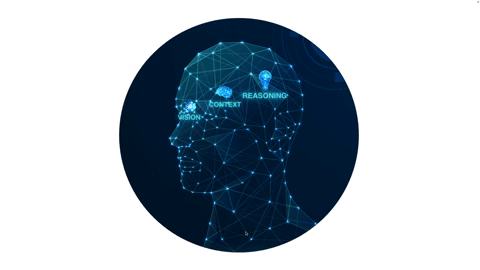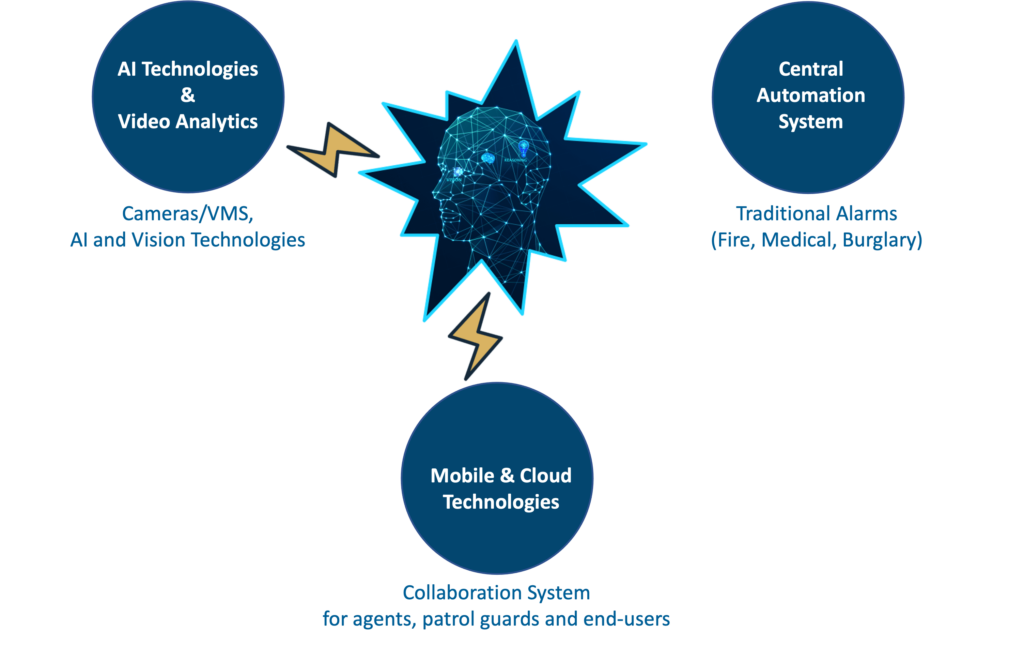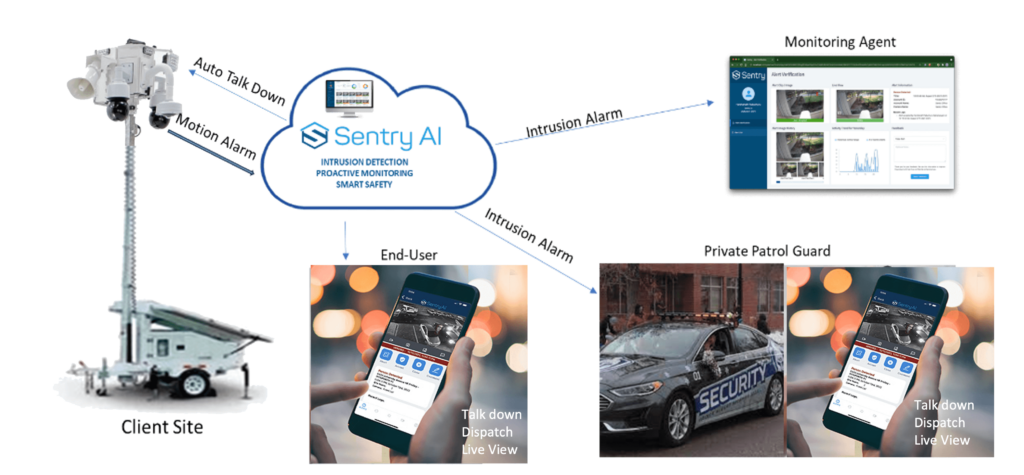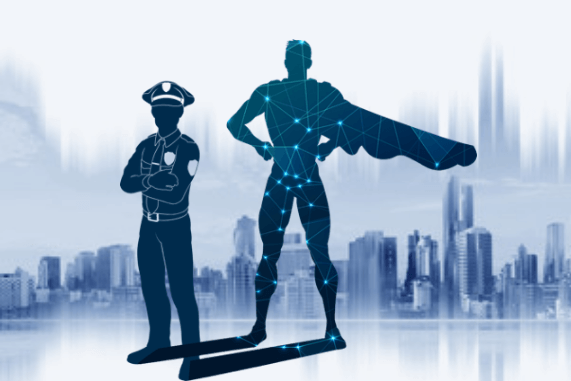Abstract:
Recent advances in AI provide a tremendous opportunity to transform the Security Industry. An AI Guard can play the role of a junior guard reducing guarding costs by a factor of ten while improving effectiveness. To achieve this breakthrough transformation, both process and product innovation are needed. This article describes the key functionalities of the AI Guard and all the associated processes and systems needed for deployment. It provides real-world implementation of an AI Guard and a list of organizations and businesses that would benefit most from deploying the solution.
No industry will escape AI-driven transformation. The security industry is no exception. The Global Physical Security Services Market was $357B in 2023 growing at 6% per year (Source: Expert Market Research). Manned guarding is the largest portion of this market at 60%! There is a tremendous opportunity to transform this labor-intensive industry both in terms of cost-effectiveness and quality of services. Recent advances in AI video analytics using neural networks combined with the reduction in storage, computing, and networking costs make it possible to transform this industry.
The monthly cost in the US for staffed on-site guarding runs $10,000 to $20,000 per month, making it cost prohibitive for most businesses. Remote guarding, where an agent is viewing video feeds from multiple cameras and sites, reduces the cost by a factor of ten. Studies have shown that the agent becomes “brain dead” after watching multiple cameras for a period of greater than 15 minutes and misses 55% of critical events (British Journal of Psychology, nine simultaneous feeds). Recent evidence of a critical miss is the invasion into Nancy Pelosi’s home while Capital Police were remote guarding the premises (see Figure 1).
Figure 1


Capital Police had a live feed of Pelosi’s home, but it did not prevent a break-in!
Guarding is quite different than alarm monitoring where the agent follows a set of protocols based on the type of alarm received. The cost for this service is $50 – $100/month. AI video analytics when used in monitoring centers has limited success due to too many false positives, agents’ lack of training on the use of video analytics, and inappropriate processes (see Figure 2). The fault does not lie with the technology, it is with the security solution developed using that technology. As proof, Tesla has removed RADAR and LIDAR from their vehicles and now relies just on AI-based vision technology in their self-driving cars! Vision provides extraordinarily rich context compared to IoT sensors now becoming vogue in alarm monitoring.
Figure 2

68% false police dispatches by monitoring agents

Virtual guards miss 55% of critical events

On-site guarding costs $20K/month
Guarding has been a laggard in terms of industry transformation. The reasons are multifold as it requires both product and process innovation. Fortunately, all the necessary technologies are now available to achieve this transformation. Technologies needed for this transformation include camera hardware, AI, video analytics, solar, networking, storage, cloud computing, mobile, and collaboration technologies. Also, an effective solution requires a deep understanding of the customer use cases and the problems they are facing.
Process innovation is key! The challenge in building the solution is not only to have a good understanding of the various technologies but more importantly have a deep understanding of the security use cases and the unmet needs of the users. Automating the current processes is not the answer. Once the problem is well-understood, the key task is to develop new processes that exploit the technologies for optimal solution. Then and only then, a comprehensive system should be built based on the new process.
The advancement in AI allows for labor substitution as machines can do a better job than humans for mundane tasks. The AI Guard (Figure 3) acts like a junior guard filtering out the noise and presents to human guards only those scenarios that require expert interpretation. This is not only cost-effective but also improves accuracy as AI works tirelessly 24/7 without any performance degradation and the human agent devotes his time to critical decision making and initiating action. AI improves over time as it learns from the feedback provided to it by the human guards.
Figure 3

AI Guard
So, what are the key functions AI Guard needs to be able to perform? It should be adaptable to various scenes. It needs to be configurable to conduct various functions an on-site guard could perform:
- Intrusion detection, and if required do not alarm when a safe list person shows up.
- Vehicle detection, and if required read the license plate to determine threat.
- In case of intrusion detection, auto-broadcast an appropriate message based on the violation.
- Differentiate people hanging around vs people passing through.
- Log and time stamp all activities performed.
- Continuously learn from the feedback received from the human guard.
When an event requires human guards to intervene, the system sends information over to human guards and end-users and they can collaborate in real-time to prevent crime and notify the authorities. Guard location, responses, and actions are all logged automatically. (see Figure 4).
Figure 4

Smart Surveillance Platform
The solution might be outstanding but if no one is aware of it or does not understand its benefits, it will have no impact. Since this is a transformative offering, the security provider needs to make significant investments in marketing and selling. It requires a new breed of salespeople who have a good understanding of AI so that they can explain with confidence that the new process is a significant improvement over the current process, is less risky, and cost-effective. Since the cost is a magnitude lower, this should expand the security market significantly. It should be a boon for businesses that have been experiencing crime but are unable to afford full-time guards. Businesses and organizations that would benefit from this include:
- Places of worship: Churches, temples, synagogues, masjids
- Community policing
- Constructions sites
- Vehicle dealerships, auctions, and repair shops
- Parking lots (retail outlets, corporate)
- Storage facilities for goods and vehicles
Sentry Solar Guard (Figure 5) is a ready-to-deploy complete security solution designed and developed for community policing. The self-powered mobile trailer is equipped with advanced surveillance cameras, a recording system, auto talkdown, lighting, and internet connection. Sentry portal is available for live monitoring and the Smart Sentry app is provided for users and patrol guards to remotely investigate the event, collaborate, and take appropriate actions such as manual talk-down or notifying the authorities. The solution is customizable. For example, they may want to have the cameras installed on electric poles where electricity is available thereby eliminating the need for the trailer. The key is to have a well-integrated solution which is easily configurable to meet the specific needs of the customer.
Figure 5

Sentry Solar Guard
In summary, the emergence of vision technologies and the maturing of various support technologies make the timing right for the transformation of the security industry. This provides a terrific opportunity for the security providers, tremendous cost savings for the end users, and a reduction of crime in the community!
About the Author

Farhat Ali is co-founder and chief operating officer of Sentry AI. He is former president & chief executive officer of Fujitsu America and advisor to many startups.
Farhat graduated summa cum laude from Princeton University with a Bachelor of Science degree in electrical engineering and computer science. He obtained a Master of Business Administration from Harvard Business School.
About Sentry AI
Sentry AI is a pioneer of AI-powered video analytics solutions for physical security and public safety. They received the prestigious 2022 Marvel Award for Innovation from TMA/SSI. Sentry AI’s actionable insights are trusted by thousands of businesses worldwide across multiple industries including construction companies, auto dealerships and repair shops, parking lots, college and office campuses, and central monitoring stations. For more information, please visit www.smartsentry.ai.


